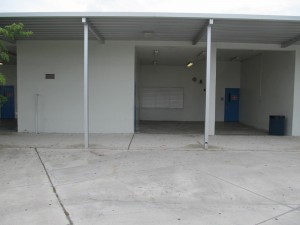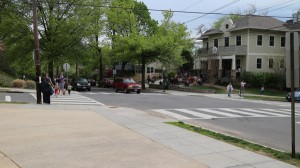
A high school student was shot and killed by one of her friends in this spot. Multiple opportunities to prevent this tragedy were missed. The school and district had focused intently on active shooter incidents while ignoring numerous proven strategies to prevent the types of homicides that claim the lives of 8.5 times more victims than active shooter events. The school district settled the civil action filed in this case for $350,000. Tragically, the school district and local law enforcement agencies had been provided with approximately $49 million in federal grant funding for school safety efforts, security and emergency preparedness.
Factual Information Should Drive School Safety Efforts
With striking regularity we are pounded with headlines that paint a terrifying picture of school safety in America. Reports that claim that school shootings take place almost daily, that the majority of students and staff who lock down in school shooting events are killed, and that we must now focus our efforts on training students and staff to attack gunman. The problem is that each of the examples and many more too numerous to list in a blog have not been supported by any real evidence. In some cases, these alarmist assertions have been made by vendors with a product or service to sell at any cost. In other instances, outlandish claims have been made for clearly political purposes. And in many cases, they are made by people with the best of intentions. The problem is each of these and other alarmist and unsubstantiated claims result in the deaths of innocent students annually. This is because many of our local, state and federal school safety efforts in the past two years are intensively and pervasively focused on active shooter incidents to the exclusion of far more common causes of death in K12 schools. In effect, preventable deaths continue to occur while we focus intently on the most frightening types of events with intensity while dedicating precious few resources to leading causes of death in K12 schools. Having worked seven active shooter incidents in American and Canadian schools, I fully understand that mass casualty school shootings are truly horrific events. However, the tragedies faced by many parents whose children die from more common causes cannot be ignored just because the quiet tragedies do not receive intensive media coverage.
In his groundbreaking report Relative Causes of Death published by the Maine Department of Education, Steve Satterly proves conclusively that active shooter events are not the leading cause of death in American K12 schools. Satterly’s research is the first time the standard United States Government definition for active shooter incidents has been used to determine how many people have been murdered by active shooters in American K12 schools. He found that 62 people were murdered by active shooters on K12 property over a time period of fifteen years, from 1998-2012. This figure is much lower than the numbers we often see reported. Satterly spent two months evaluating mounds of data to compare active shooter deaths to other causes of death on K12 school campuses. Among other things, Satterly demonstrated that twice as many people died from suicide on school property (129) as were murdered by active shooters, that other forms of homicide are far more common than active shooter deaths and that school-related traffic fatalities caused nearly 8.5 times more deaths than K12 active shooter deaths.

While active shooter incidents have resulted in the brutal murders of 62 students and staff from 1998 to 2012, school-related traffic fatalities claimed 525 lives during the same time period. While any school can be the scene of a mass casualty shooting, other types of school crisis events have claimed far more lives over the past fifteen years. School safety resources should be utilized in a thoughtful and balanced manner.
Over the past two years, school and public safety officials have often focused far more time, energy and money towards the prevention of and preparation for active shooter events than on other deadly threats. This would be an improvement if there were a focus on strategies that have been proven to work and if the efforts to prevent more common causes of death were not suffering as a result. Active shooter events are one very real possibility for any school in America. No school is immune to the genuine possibility of such an event on campus. However, Satterly’s research demonstrates that school officials should also devote attention to the types of violent deaths they are far more likely to experience. While most children who die on school property die one at a time without national media attention, these deaths are just as tragic as those horrific events that capture the headlines as well as tax our limited school safety resources.